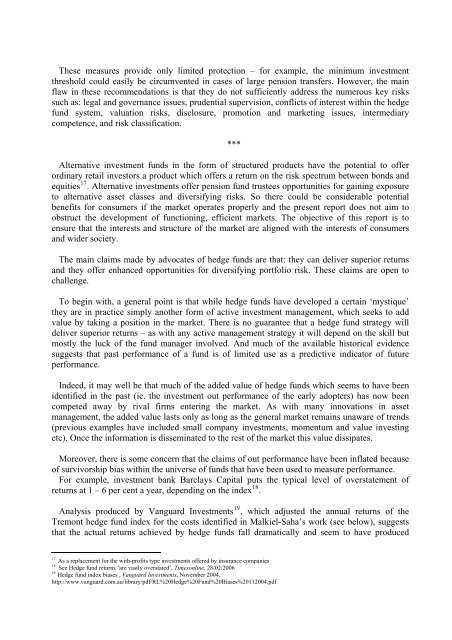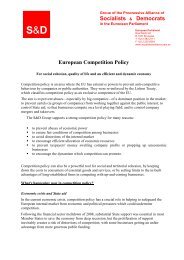Executive summary - Udo Bullmann
Executive summary - Udo Bullmann
Executive summary - Udo Bullmann
- No tags were found...
You also want an ePaper? Increase the reach of your titles
YUMPU automatically turns print PDFs into web optimized ePapers that Google loves.
These measures provide only limited protection – for example, the minimum investmentthreshold could easily be circumvented in cases of large pension transfers. However, the mainflaw in these recommendations is that they do not sufficiently address the numerous key riskssuch as: legal and governance issues, prudential supervision, conflicts of interest within the hedgefund system, valuation risks, disclosure, promotion and marketing issues, intermediarycompetence, and risk classification.***Alternative investment funds in the form of structured products have the potential to offerordinary retail investors a product which offers a return on the risk spectrum between bonds andequities 17 . Alternative investments offer pension fund trustees opportunities for gaining exposureto alternative asset classes and diversifying risks. So there could be considerable potentialbenefits for consumers if the market operates properly and the present report does not aim toobstruct the development of functioning, efficient markets. The objective of this report is toensure that the interests and structure of the market are aligned with the interests of consumersand wider society.The main claims made by advocates of hedge funds are that: they can deliver superior returnsand they offer enhanced opportunities for diversifying portfolio risk. These claims are open tochallenge.To begin with, a general point is that while hedge funds have developed a certain ‘mystique’they are in practice simply another form of active investment management, which seeks to addvalue by taking a position in the market. There is no guarantee that a hedge fund strategy willdeliver superior returns – as with any active management strategy it will depend on the skill butmostly the luck of the fund manager involved. And much of the available historical evidencesuggests that past performance of a fund is of limited use as a predictive indicator of futureperformance.Indeed, it may well be that much of the added value of hedge funds which seems to have beenidentified in the past (ie. the investment out performance of the early adopters) has now beencompeted away by rival firms entering the market. As with many innovations in assetmanagement, the added value lasts only as long as the general market remains unaware of trends(previous examples have included small company investments, momentum and value investingetc). Once the information is disseminated to the rest of the market this value dissipates.Moreover, there is some concern that the claims of out performance have been inflated becauseof survivorship bias within the universe of funds that have been used to measure performance.For example, investment bank Barclays Capital puts the typical level of overstatement ofreturns at 1 – 6 per cent a year, depending on the index 18 .Analysis produced by Vanguard Investments 19 , which adjusted the annual returns of theTremont hedge fund index for the costs identified in Malkiel-Saha’s work (see below), suggeststhat the actual returns achieved by hedge funds fall dramatically and seem to have produced17As a replacement for the with-profits type investments offered by insurance companies18See Hedge fund returns ‘are vastly overstated’, Timesonline, 28/02/200619Hedge fund index biases , Vanguard Investments, November 2004,http://www.vanguard.com.au/library/pdf/RL%20Hedge%20Fund%20Biases%20112004.pdf





